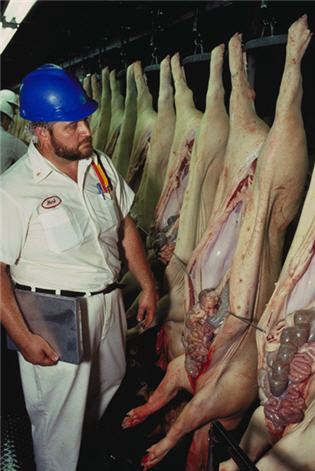 Overview
Overview
Animals are first stunned, and then exsanguinated. They are many different ways to do this, varying with the type of animal being slaughtered. The plasma from waste blood may be recovered for use in animal feed products. Carcasses are then eviscerated, and the hide is removed and retained to make leather products. The carcass is then cooled before further processing and butchering to prevent the growth of microbes. If done properly, meat can have a shelf life of up to three weeks. Animal wastes are disposed of by rendering to produce lard, tallow, soap, and grease. If the plant is an integrated plant, it will cut and continue to process the meat. Otherwise, the carcasses are shipped to processing plants in sterile, refrigerated trucks
Major Processes
Major Equipment
Natural Gas Technologies
Carcass Cleaning – Steam Vacuuming
Source: Overview Text from http://www.sentech.org/CHP4foodprocessing/meat.htm 4/2007; Hog processing inspection photo from http://www.usda.gov/oc/photo/99c0694.jpg 4/2007;
